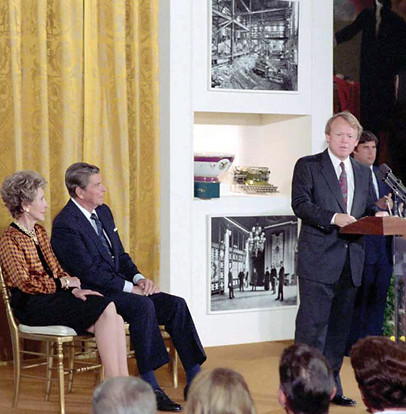A Light on History!
700 Procter Street
Port Arthur, Texas, 77640
(409) 982-7000
CART
Memorials/Donations
William Seale
August 7, 1935 - November 21, 2019 Beaumont, Texas
William Seale was an American historian and author whose primary interest was in historic architecture, particularly that of the White House, state capitols, and historic governors' mansions. He was instrumental in preserving many historic structures across the country, including private homes.
Seale was born and raised in Beaumont, Texas, the son of William Seale, a contractor who studied historic building practices, and Eugenia Brooks Seale, who had an eye for interiors and furnishings. He attended Southwestern University (BA 1961) and Duke University (MA 1964 and Ph.D. 1965). He taught for several years at Lamar University, the University of Houston, the University of South Carolina, and Columbia University.
In 1965, he moved to Washington, D. C.
From 1973 to 1974, Seale was curator of cultural history at the Smithsonian Institution. He then became an independent scholar, publishing many books and essays and frequently appearing on C-SPAN to discuss the history and preservation of significant American buildings. His restoration projects include the state capitols of Michigan, Ohio, Kansas, Florida, Mississippi, and Alabama and historical consultation on the State Houses of Minnesota, Alaska, and New Jersey. Historic houses include Dodona Manor, the Gen. George C. Marshall House, Leesburg, Virginia; Ten Chimneys, Home of Alfred Lunt and Lynn Fontanne; Genesee Depot, Wisconsin; George Eastman House, Rochester, New York; "ZEMANEE- FA TEEO" Ximenez-Fatio House, St. Augustine, Florida; Old Governor's Mansion Milledgeville, Georgia); and many others over twenty-five years.
In 2013, he served as a consultant and panelist for the Cable-Satellite Public Affairs Network (C-SPAN) production First Ladies: Influence and Image, which ran for two seasons. First Lady - Julia Grant | C-SPAN First Ladies: Influence & Image.
His unique approach to studying history through biography, architecture, landscape, and cultural context expanded the public's understanding of the American past. By emphasizing the human stories of public places, Seale made history accessible and enjoyable to scholars and general audiences, and he inspired support for historic preservation across the nation.
Through his work with the White House Historical Association, William Seale served as an adviser, author, interpreter, lecturer, leader, and mentor, generously sharing his knowledge, wisdom, insight, and infectious sense of humor. Association President Stewart D. McLaurin explains, "When First Lady Jacqueline Kennedy first undertook to restore the historic integrity of its public rooms, she wanted also to promote public understanding of this historic Home. Dr. Seale helped realize her vision more than any historian through his writing. Mrs. Kennedy wrote, 'Many First Families loved this house, and everyone left something of themselves behind in it.' What they left behind—the imprint of their lives—is precisely what Seale revealed in his books through his long service to WHHA."
His President's House Book was first published in 1986 and was the first comprehensive narrative to examine the construction, architecture, and manner of living in the Executive Residence. The groundbreaking first edition was expanded in 2008, and the authoritative work has been consulted and referenced by generations of scholars and enjoyed by many thousands of readers. "Nobody knows more about the White House than William Seale, and no one can match his gift for making America's House come alive through many centuries."
"Perhaps Dr. Seale's greatest contribution to the realization of Mrs. Kennedy's vision was made through the White House History Quarterly, the journal he founded for the Association in 1983 and which he continued to edit for more than fifty issues, working through his final illness, until the time of his death. He insisted he wanted it to be an 'everyman's journal with scholarly articles that would not be scholarly in the exclusive sense.'
Seale's subsequent books are many included The White House Garden (1995), The White House: History of an American Idea (2001, 2018), The Night They Burned the White House (2014), and Blair House: The President's Guest House (2018). And many others. He provided the narrative to At Home in the President's Neighborhood (2016) and edited The White House: Actors and Players (2000). In 2017 he released A White House of Stone: Building the First Ideal in American Architecture. His final work for the Association, To Live on Lafayette Square: Society and Politics in the President's Neighborhood, was released in May 2019.
His historical perspectives were vast, outdistanced only by his ability to extract the larger and more meaningful story from his contributors. Dr. Seale's passion for accurate historical research and writing was the hallmark of his career."
Below are excerpts from an interview with Dr. Seale regarding His most comprehensive publication, The President's House.
For more than forty years Dr. Seale contributions to the programs and publications of the White House Historical Association were instrumental in shaping the Association's study and dissemination of White House history. He passed away in his home in Dallas, TX on November 21, 2019, following a long illness. In addition to his amazing gifts, Bill was a loving husband, father, and grandfather.


















